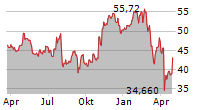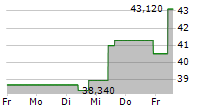
NEW YORK, NY / ACCESSWIRE / September 5, 2024 / Regardless of age or income, it's important to understand basic budgeting principles to ensure financial stability and success. Among the different budgeting methods out there, the 50-30-20 budget rule stands out as straightforward guidance to help manage finances effectively. The 50-30-20 budgeting rule allocates income into three distinct categories: needs, wants, and savings.
This article will provide an overview of what the 50-30-20 rule is and how it works to give budgeters a strategic plan to successfully save their hard-earned funds.
What is the 50-30-20 rule?
The 50-30-20 rule is a framework for helping individuals and families budget their finances. It involves splitting the household income into three main groups: needs, wants, and savings. This helps people keep their expenses in proportion to their lifestyle and reminds them of the importance of saving for future financial goals.
How Does the 50-30-20 Rule Work?
Anyone can use the 50-30-20 rule by splitting up their after-tax income as follows:
50 Percent on Needs
A "need" is anything that a person must have. These would be basic necessities for survivability and risk mitigation, such as:
A mortgage or rent payment
Insurance - health, auto, life, etc.
Utilities - water, gas, electricity, internet/phone service
Basic groceries
Gas and other transportation costs
Needs are also considered to be the minimum payment on any debt. For example, paying the minimum monthly payment of a credit card balance would fall into the "needs" category.
30 Percent on Wants
A "want" is anything that someone would like to have but doesn't necessarily need. In other words, think of discretionary purchases like:
Dining out at restaurants
Entertainment
Shopping trips
Gifts for others
Subscription services for movies or music
This category is intended to allow people some breathing room to enjoy the money they've worked to earn.
20 Percent on Savings
The savings category is meant to help encourage building a sound financial future. These might be actions such as:
Contributing to a retirement fund
Building up an emergency fund
Coming up with a down payment for a major purchase (like a house)
The funds in this category can also be used to pay off debt above and beyond the minimum required payment that was already made with the "needs" category.
What Happens When Expenses are Too Great?
Even with the straightforwardness of the 50-30-20 budget, sometimes a person's expenses can still overwhelm them and make it difficult to save as much as they should. This can be especially true following a job loss or unplanned expensive repair.
When that happens, a person can get emergency loans to help get them past the situation. Emergency loans are typically personal loans designed to offer quick financial relief in response to unforeseen situations, such as medical emergencies, urgent home repairs, or sudden job loss. While they are accessible to individuals with varying credit scores, the terms, including interest rates and repayment periods, can differ between lenders. Borrowers should carefully evaluate the loan's terms and conditions and their ability to repay it, ensuring it serves as a practical solution to their emergency financial needs without leading to further financial strain.
The Bottom Line
Budgeting doesn't have to be an overly complicated process. Individuals and families can use the 50-30-20 rule to split their finances among needs, wants, and savings. This will help them to keep expenses in check while also emphasizing saving for the future.
Sponsored Content
About OneMain Financial
View Website
OneMain Financial is the leader in offering nonprime customers responsible access to credit and is dedicated to improving the financial well-being of hardworking Americans.
CONTACT:
Sonakshi Murze
Manager
sonakshi.murze@iquanti.com
SOURCE: OneMain Financial
View the original press release on accesswire.com



